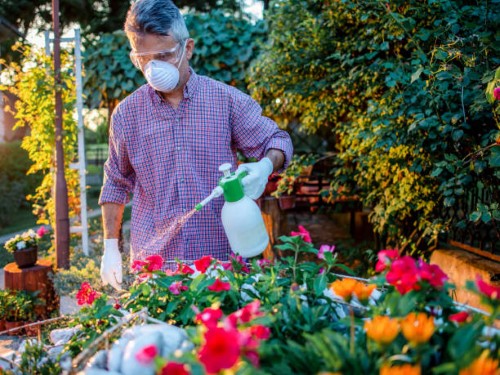
Whether you are producing agricultural crops or maintaining a lawn or home
garden, weed control will be important for your overall success. There are
numerous ways to control weeds, including biologically, chemically and
culturally. All of these options are available in an integrated program that is
both economical and environmentally friendly.
Chemical control with paraquat herbicide has been an important method of
controlling weeds in crops and home landscapes for years. The modern herbicides
are selective and effective. These characteristics make them less damaging to
the environment when they are properly used. Although herbicides are common
however, few people are aware of how they work to control unwanted
plants.
Herbicide application
In general, herbicides are applied either preemergence or postemergence. This
means that they are applied either before or after the weeds emerge from the
soil and begin to grow. Preemergence herbicides kill weeds just after they begin
to germinate or when they emerge from the soil's on the surface. Postemergence
herbicides are used to control weeds already in growth and readily visible. You
may get more details about Paraquat Herbicide by browsing legal resources site.
Some herbicides are applied to the soil and used by plants that are seedlings
or their roots. They are thought to have soil activity. Herbicides that are
applied to the plant's foliage exhibit the ability to grow. Some herbicides mix
both. Preemergence is a common method of applying herbicides that have a high
level of soil activity.
Selectivity
Selectivity is the method by which a herbicide controls or kills certain
plants but leaves other plants unharmed. Selectivity could be as simple as
controlling broadleaf grass, but not grass. New herbicides offer more advanced
selection, and differentiate between grass and broadleaf plants.
Nonselective herbicides do not have any selectivity. These herbicides are
able to destroy any plant. The time and location of herbicides can affect the
selection. Most herbicides can be harmful, even to normally tolerant plants, if
their dose is excessively high.
Special Beacons
Be aware of drift throughout application to ensure plants that aren't target
aren't harmed. The application of systemic herbicides immediately following
disruption of cell membranes or arsenicals that are organically produced is not
recommended. Both diquat and paraquat are nonselective herbicides which are
harmful to broadleaf plants and grasses. In peanuts, however, some selectivity
can be achieved by using paraquat at the stage of cracking.
Lipid Synthesis Inhibitors
Since they are only effective on annual and perennial grasses, these lipid-synthesis inhibitors make a statement. They do not affect broadleaf grasses. With diclofop being the only exception, these herbicides are applied after emergence and exhibit little or any soil action. Concentrated crop oil or different adjuvant has to be used to increase the absorption of herbicides into the leaf. For maximum effectiveness this herbicide should be applied to actively growing grass weeds. These herbicides won't work as well if the grass weeds are stressed in their growth rate.
No hay comentarios:
Publicar un comentario